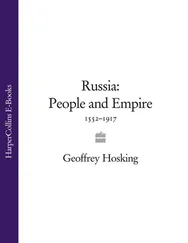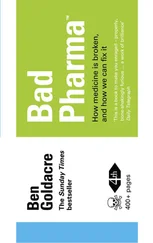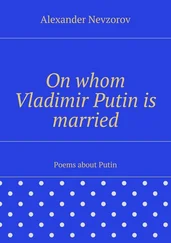Putin’s Missed Opportunity
Prosperity strengthened the Putin consensus and the Putin majority. The apathy of the new middle class became the bedrock of his ‘stability’. Yet was the boom cementing all this ‘luck’ or ‘Putin’? In fact there was more government intervention to create a boom than many think. One study calculated that no more than 50 per cent of GDP growth in the period was due to the rise in oil prices. 33Policy choices accounted for some of the rest. Studies have shown that the flat tax, which increased labour supply and lowered tax evasion, boosted growth. The decision to create a ‘one-stop shop’ for business registration, taking no longer than a week, also helped. A key reform was ensuring inspecting agencies only had the right to do so no more than once every two years. Making licences valid for five years improved the climate for small and medium businesses. The choice to exempt about 90 per cent of businesses that had previously required licences also boosted growth. 34The Kremlin’s choice of a conservative macro-economic policy, financial-sector reform and the decision to build up reserves calmed investors and interests rates, whilst creating enough market confidence to support an investment boom. This helped the stabilization of financial services and their strong link-up with the property and consumer sectors, further fuelling growth. All this strengthened the middle class.
Not everyone, of course, agreed. The influential economist Sergei Aleksashenko, deputy governor of the national bank when Russia defaulted, looks back miserably at the boom as a gigantic missed opportunity: ‘None of those reforms you listed can really be counted as major reforms… is a reformed tax code really a major reform? Looking back on it I feel saddened that Putin wasted the best decade in Russian economic history on his corrosive agenda.’
Studies backed this up. A report by the prestigious Centre for Strategic Research headed by a former deputy finance minister estimated that in 2010 only 36 per cent of the reforms envisaged in the government’s ‘Strategy 2010’ a decade earlier had been achieved. 35
Much more could have been done, but Russia was still leaving poverty behind. The Putin government saw the consumer revolution as its finest achievement. However, it was going to be one of its biggest problems. The old politics of the Putin majority was based on there being one huge, formless mass on the verge of poverty that could be rallied round the standard of ‘stability’. Russian society was now becoming more diverse – but the ‘United Russia’ straightjacket would soon leave this new middle class feeling suffocated and impotent. The Kremlin did not grasp this until it was much too late.
That Russia would become an Internet success story in the first decade of the new century would have seemed utopian to those who knew the Soviet Union in its final years. The technological lag in personal computing was enormous. The joke, ‘the USSR makes the most advanced micro-chips in the world, they are the biggest’ reflected reality. Computers in regular offices were virtually absent in the late 1980s.
The situation had been stood on its head by 2010. Russia was now the largest Internet market in Europe, with the greatest online penetration rate amongst the BRICs (Brazil, Russia, India and China), with the most engaged social networking on earth and a huge and sophisticated blogosphere with more interlinking between different political poles than in the USA. 36This ‘Runet’ was mostly being trafficked through Russian search engines, Russian email giants and Russian-owned blogging platforms. Partially this is because the state allowed the Internet to develop without government interference. Mostly, it was driven by the innovation that made the Internet and computers cheap enough around the world for vast numbers of people to have them at home. These technologies – unlike upgrading whole industries or bureaucracies – could be implanted into Russia by any individual who wanted to.
As Putin’s videocracy was created he chose not to follow China and erect a ‘great firewall’, despite suggestions from the security services. Attempts by the FSB to have a surveillance role in the Internet were not followed up. At the time, mobile phone and Internet penetration rates were minimal – as were the capacities of the Russian state to monitor them. With almost all the population getting their news from national TV stations, which the Kremlin had brought under its control, the existence of an online discussion world did not seem harmful but useful. Authoritarian regimes usually struggle to deal with the paradox of needing to censor information about their country’s problems whilst needing reliable information about those same problems. The Internet was seen as something that could help policymakers to know how bad things really were. The Kremlin also felt that a small world commenting freely on the problems of Putinism could be useful as an echo chamber, for dissenters to let off steam. Keen to promote science and technology as part of ‘catching up with the West’, these ideas came together – around the time that Putin made the fateful decision to leave the Internet open.
The Russian Internet developed around three defining features. The first was that, unlike in other Eastern European countries, the platforms that hosted it were largely indigenous because of the Cyrillic script, allowing it to become a ‘pole’ in the emerging online world, like China, which also uses home-grown platforms. The largest search engine, Yandex, was Russian, as were the largest social-networking sites, VKontakte and Odnoklassniki, and the largest email provider, Mail.ru. Moscow was keen to encourage national champions and let them get on with their business. In an area unconnected to the Putin state, many online companies became islands of decent corporate governance. According to Anton Nossik, one of the fathers and leading blogger-managers of the Runet, this was the very secret of its success:
The Internet in Russia evolved into a kind of alternate reality to the rest of the economy. As it began to boom there were no FSB raids, no hostile takeovers, no state monopolies and no ministries that needed bribes. The Internet grew in Russia in a kind of utopia – where there was no state. This was the only part of the economy where to be a player and to be a winner you needed no political connections, no United Russia membership card and no visits to the Kremlin. Its triumph was possible as this was the only bit of Russia without bureaucrats.
The second defining trait of the Runet was the incredible success of social media. By fortunate coincidence VKontakte lured students online at the same time, between 2006–7 that the site Odnoklassniki pulled online all those with very little reason to be there – those in their fifties and sixties. By promising to reconnect them to their old classmates, and thus the Soviet Union, this site brilliantly brought online the demographic that no one expected to see in social networking. There was one popular foreign exception amongst the dominant platforms – Livejournal. Originally a US blogging portal that was somewhat popular in the early 2000s, the site took off in Russia. It allowed blogs to have ‘friends’ or followers, blending blogging with social networks. Initially, it was also invite only. This appealed to the original community of Russian bloggers, who were mostly exclusive, well-to-do Moscow journalists and writers who knew each other offline. This platform became the heart of the Russian blogosphere.
Over the course of the decade the opposition – be they nationalists, liberals or ecologists – migrated into blogging. As censored TV news declined, losing 40 per cent of its audience between 2000 and 2006, the online world thrived and social networking flourished. By 2010 the country had the most engaged social networking community in the world – whose users were increasingly following and linking to blogs. Russian political blogging, due to its elitist and ‘Moscow community’ feel, was more convivial than the American blogging scene – where partisan bloggers simply linked to each other. In Russia, one Harvard study showed that bloggers from different political ‘poles’ were more inclined to link one to another. The same study also picked up that there was a ‘nationalist’ and a ‘liberal’ cluster online – but in an interesting indication of the next generations’ politics, there was no ‘Putin’ cluster. 37
Читать дальше












